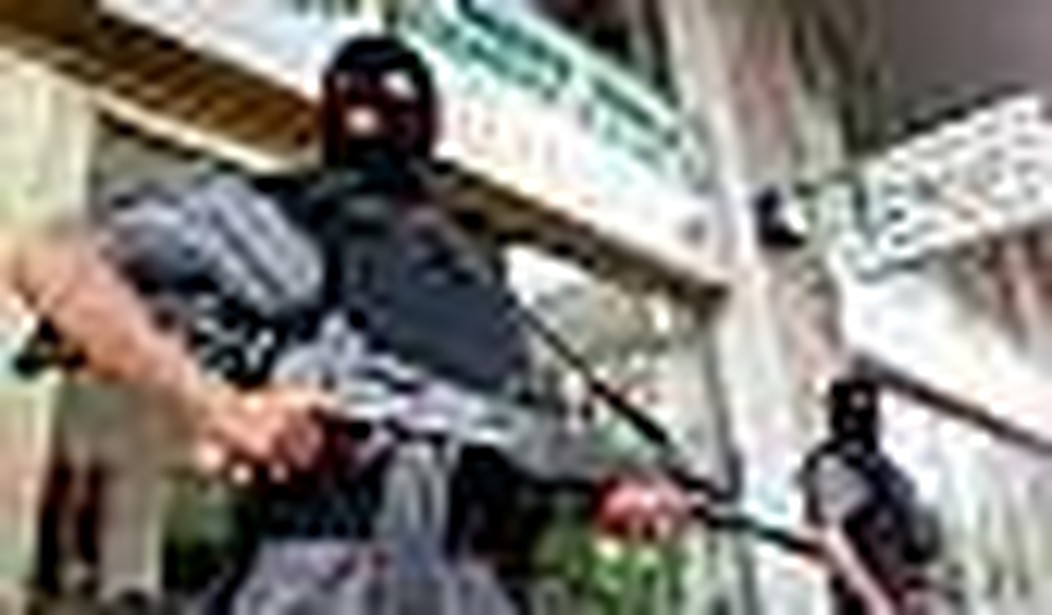The paradox of Mexico is that it is, at once, a country yearning for modernity and yet inextricably tied to ancient superstitions.
Curiously, you’ll find traces of both the modern and the mystical in the government’s response to an increasingly vicious drug war. Since it began in January 2007, Mexican President Felipe Calderon’s valiant battle against drug cartels has cost nearly 8,000 lives, caused U.S. military analysts to label Mexico a “failed state,” and produced a backlash against Calderon’s National Action Party (PAN) while breathing new life into the down-and-out Institutional Revolutionary Party (PRI).
The modern piece of this puzzle is that Calderon’s army is reportedly receiving world-class training at the hands of U.S. Special Forces, who are schooling Mexican soldiers in counter-insurgency strategies. The results so far have been encouraging. The government has announced a series of high-profile arrests of major drug suspects — three last month, in fact.
One of the latest narcos to fall was Vicente Carrillo Leyva, one of Mexico’s most-wanted criminals and allegedly the second-in-command of the powerful Juarez cartel. The Attorney General’s Office of Mexico had named Carrillo Leyva to a list of the country’s most-wanted narcotics suspects and offered a reward of 30 million pesos ($2.1 million) for his capture.
Clearly, the Calderon government is all in on the drug war, and — whether the skeptics believe it or not — it’s in it to win it.
There is even evidence that the cartels are running scared and getting desperate. When they’re not throwing grenades into crowds, they’re staging mock protests against the military and plotting to manipulate the political process in the hopes of dealing the PAN a major blow in the July midterm elections.
Not that the drug thugs worry much about extinction. They’re going to be around for a long time thanks to market forces. As long as Americans consume drugs and supply weapons, there will always be drug trafficking. What traffickers worry about is the bottom line. Their business, like any other, depends on maintaining the kind of profit margins to which they are accustomed. The Calderon government is seizing so much of the product, and arresting or killing so many narcos, that much of the profit is going down the drain. The drug merchants have to buy more guns than they normally would at higher prices, and they have to channel more of their drug shipments to Mexican customers who expect to pay lower prices than the drug lords could charge Americans if the drugs were getting through to the United States. None of this is good for business.
The good news for the drug lords is that they aren’t the only ones who are growing desperate and willing to try anything that might tilt the scales in their favor. Consider the latest campaign by Mexican authorities — what seems to be an all-out assault against, of all things, a saint often associated with drug dealers: La Santa Muerte, or Saint Death. All over the country, Mexican officials and soldiers are reportedly destroying shrines and chapels that pay homage to La Santa Muerte in an attempt to break the grip that the narcos have on pop culture. No one seems to care that the saint isn’t exclusive to drug dealers but also popular with people who work at night: taxi drivers, police officers, nurses, prostitutes, etc.
The attack on “Saint Death” is a ridiculous distraction. Already Mexicans are blasting the destruction of the shrines. Recently, about 200 worshippers turned out to protest and charge the government with religious persecution in the name of fighting drug cartels. Given how important Catholicism is to the Mexican people, the authorities are playing with fire. Besides, it will take more than sledgehammers to cure Mexico of its fascination with drug traffickers. Maybe the message will get through when more Mexicans wake up to what is happening to their own children because of the drug culture. Up to now, it’s been mostly Americans kids at the end of that supply chain. But as drug traffickers are forced to develop a domestic market for their product because of the government’s crackdown, cocaine, marijuana, and methamphetamine are flooding Mexico. In five years, addiction will be destroying what remains the most precious institution in the country: the family. Then no one in Mexico will build shrines to drug saints.
In its war with drug cartels, the Mexican government has chalked some victories and some setbacks. It would have more of the former and fewer of the latter if it would — just this once — put aside superstition and greet the 21st century.









Join the conversation as a VIP Member